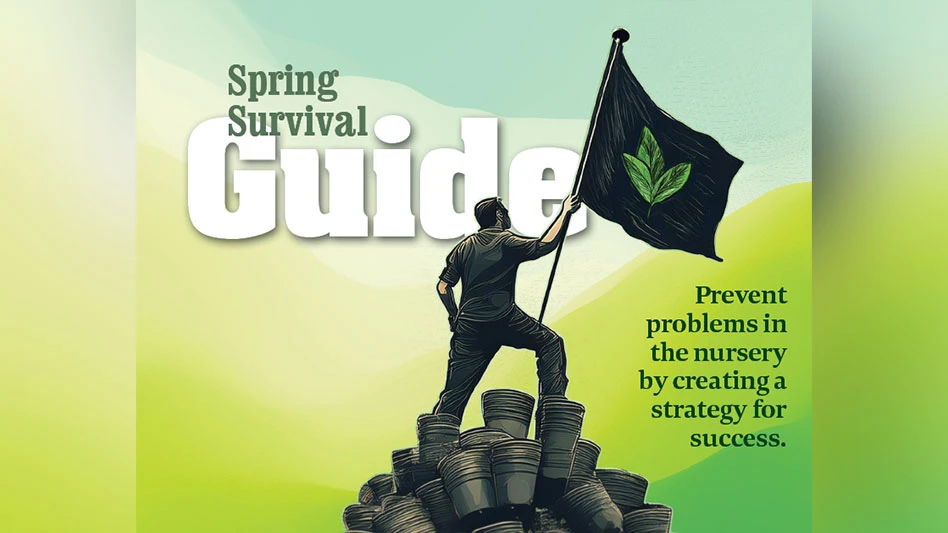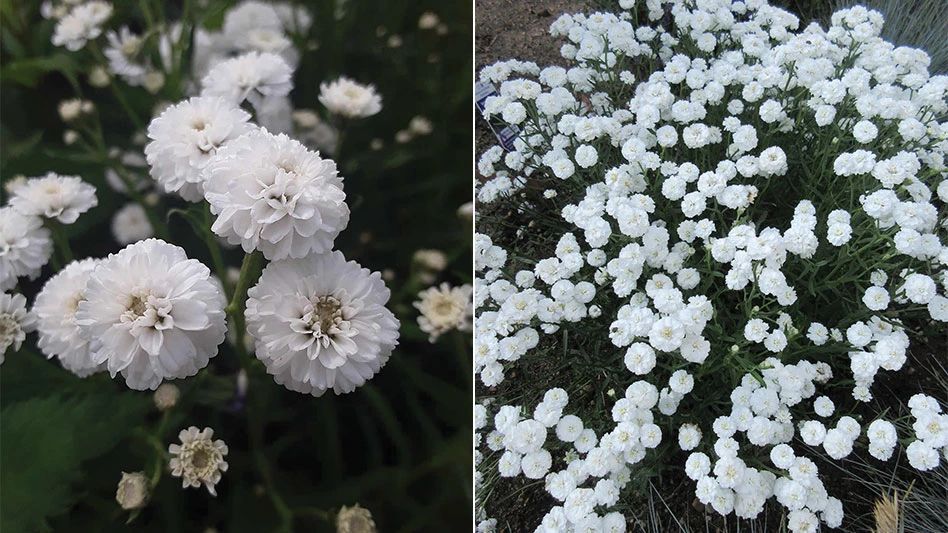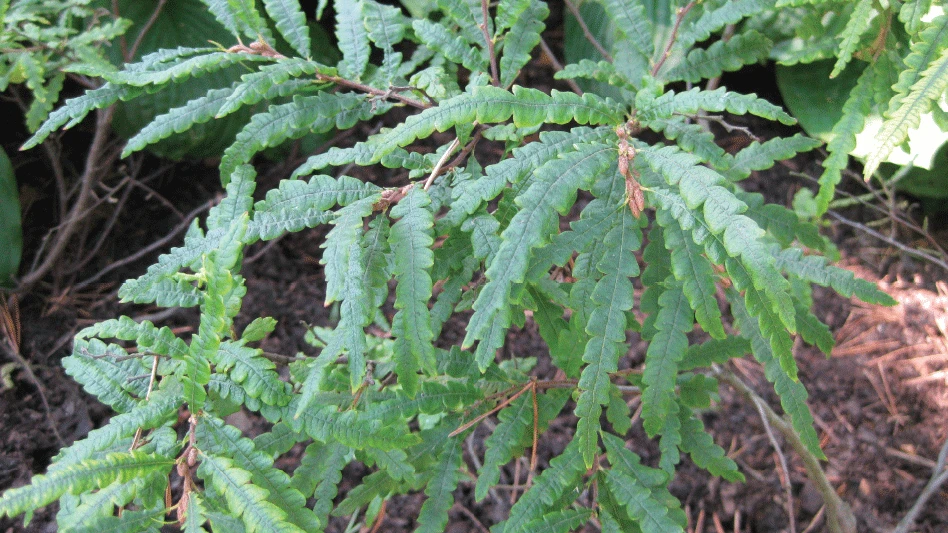 Phenology is the science of monitoring nature’s signals that let you know how weather and climate are progressing. By studying recurring biological phenomena (like plants blooming, insect eggs hatching and bird migration) and their relationship to the weather, you can predict pest activity. And if you know when the pests are coming, you can plan for their arrival.
Phenology is the science of monitoring nature’s signals that let you know how weather and climate are progressing. By studying recurring biological phenomena (like plants blooming, insect eggs hatching and bird migration) and their relationship to the weather, you can predict pest activity. And if you know when the pests are coming, you can plan for their arrival.
“Accurate timing is important to being effective and reducing the number of applications that are needed, both of which save money and improve the quality of the pest management program,” said Dan Herms, professor and chair of the Department of Entomology at Ohio State University and the Ohio Agricultural Research and Development Center.
Because pests and plants respond to temperature in the same way, the plants can be used as a biological calendar. And by using that calendar to schedule your spraying, you can increase the pesticide effectiveness and reduce the amount you need to use.
Degree of difficulty
According to Herms’ research, degree day models can be used quite accurately to predict the appearance of insect pests. These models use a measurement called growing degree days. Degree days are a way of measuring how much heat has accumulated over the course of a season and how fast the growing season is progressing.
The base temperatures used in degree days are based upon the temperatures above which certain plant or insect growth occurs. Different plants have a different base temperature above which they will start to grow, and their growth will typically be roughly proportional to the amount by which that base temperature is exceeded.
Weather varies from year to year, but these events always happen in the same order. That is the key to accurate timing of pesticide application and other pest management tactics.
“Those events occur in the same order every year, we’ve found through our research,” Herms said. “Whether it’s a warm spring or cool spring, they still occur in the same order, though not necessarily on the same calendar day.”
Growers can follow the blooming sequence in their nurseries and use that to predict when pests are going to be active. For example, when the lilacs are blooming, growers would know that is the time to monitor for pine needle scale egg hatch, but they are too early for their appointment with oyster shell scale. If black locust is blooming, they are getting real close to their appointment with black vine weevil, but they have missed their appointment with pine needle scale.
Crystal ball
For this system to work, you have to know how many cumulative growing degree days or heat units are required for a particular pest to emerge or hatch. Luckily, Herms’ group has already done that research.
“We have a website people can go to and input a ZIP code and it will tell you how many degree days have accumulated in that location and what pests are active,” Herms said. “Growers can use that to monitor the progression of the growing season, and that keeps them from having to keep track of the degree days themselves, although some do. As far as knowing when to spray, you have to be able to connect the degree days to the insect activity and that’s what we’ve done with this website.”
Herms also suggests that growers use the plant sequence embedded in that biological calendar as a way of monitoring the progression of the growing season and scheduling their pest management appointments.
By visiting the site periodically (www.oardc.ohio-state.edu/gdd/), growers can see not only what’s active right now, but what’s already happened and what’s going to happen. Growers can monitor the progression and order of appearance of the pest species. The site’s development was funded by the USDA CSREES through the North Central IPM Grants Program.
.jpg) History repeating
History repeating
When growers go the site and enter a ZIP code, they can also enter a date. The default is the current date, but if you’re interested in reconstructing phonological history, you can pick a date from a previous year. This can be helpful if you made an application on a particular day last year and are trying to determine how many degree days had accumulated at that time. If last year’s application worked well, you can duplicate that timing. Or if you were a bit late or early, you can adjust accordingly. You can also see if this year is progressing slower or faster than last year.
“Because the sequence is so consistent, if you have a plant or pest that is not part of our calendar, it’s easy to modify it yourself and insert that pest or plant into the calendar by seeing what’s in bloom when your particular pest or plant occurs,” Herms said. “Find some things in bloom when your particular pest appears, and find them on our calendar. Then you can embed it quite accurately.”
Local touch
Herms and his team works out of the Ohio State Extension, which means the research that has been done is tailored to that geographic area. That’s not a tremendous help to a grower who doesn’t live there. Herms said other states have similar programs, though none as robust. He recommends checking with your local state extension service to see what resources they have.
Michigan, for example, has some tools for keeping track of degree days. Growers there could use Herms’ site to determine the cumulative number of degree days at which a pest emerges and make the necessary regional adjustments.
“For instance, from our site you can see that EAB emerges at about 550 degree days,” Herms said. “If you’re in Michigan you can monitor your local weather system to see when you get to 550 degree days. It’s probably fairly similar. We have a nice database of 50-some pests with degree day values that is pretty robust regionally. There’s probably some variation but some is better than not knowing anything.”
Other organizations may be able to help as well. The USA National Phenology Network is one such group. The USA-NPN monitors the influence of climate on the phenology of plants, animals and landscapes. The network is a consortium of individuals and organizations that collect, share and use phenology data, models and related information. Citizen scientists, naturalists, non-profit groups, and government organizations all collect and report data either independently or through the use of Nature’s Notebook, the USA-NPN’s online database and visualization tool. The network has developed a standardized approach to phenology, so its community of researchers are all using the same system. You can learn more at the network’s website: www.usanpn.org.
Although phenology can be a helpful part of an overall strategy, Herms said the true key to a successful pest management program is monitoring. His website provides information on when a pest is active, but it doesn’t tell you how many are out there. So if you use phenology, it doesn’t tell you if you have a big enough population that you need to do something about it. It just tells you when you might need to go out and make that determination for yourself.
— Matt McClellan
Get curated news on YOUR industry.
Enter your email to receive our newsletters.
Explore the April 2013 Issue
Check out more from this issue and find your next story to read.
Latest from Nursery Management
- Dümmen Orange North America celebrating 25th anniversary in 2025
- Redesigning women
- Illinois Landscape Contractors Association changes name to Landscape Illinois
- 2025 Proven Winners Horticulture Scholarship applications now open
- ICL’s Gemini Granular herbicide now registered for use in California
- Eurazeo Planetary Boundaries Fund acquires Bioline AgroSciences
- The Leading Women of Horticulture
- Leading Women of Horticulture: Dana Massey, Plantworks Nursery






